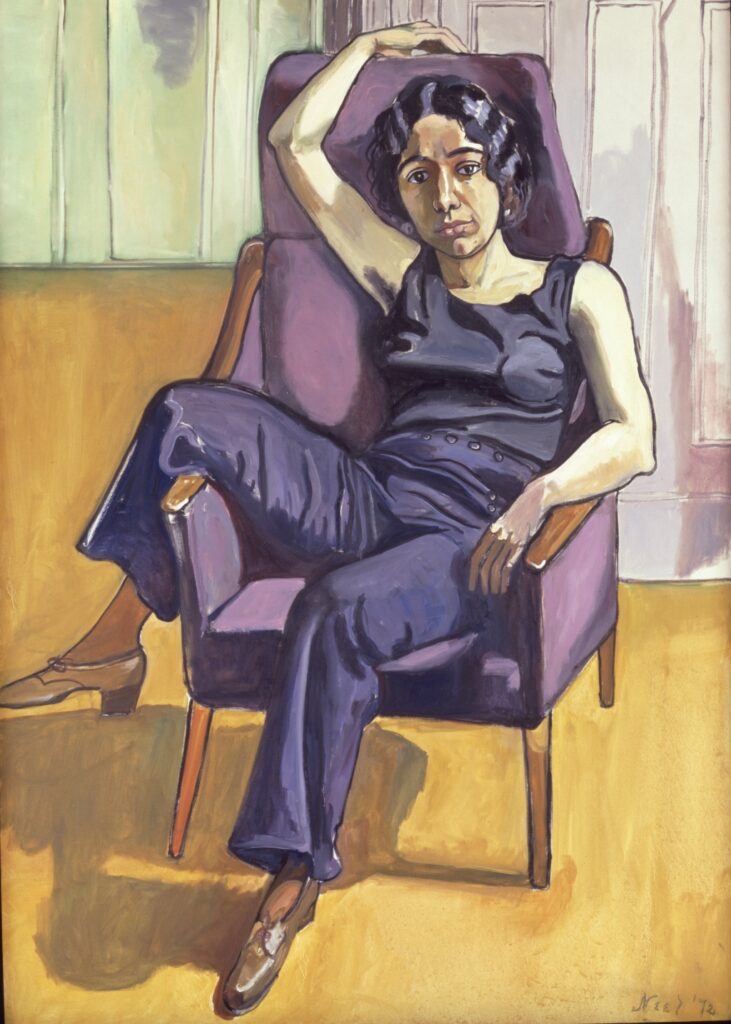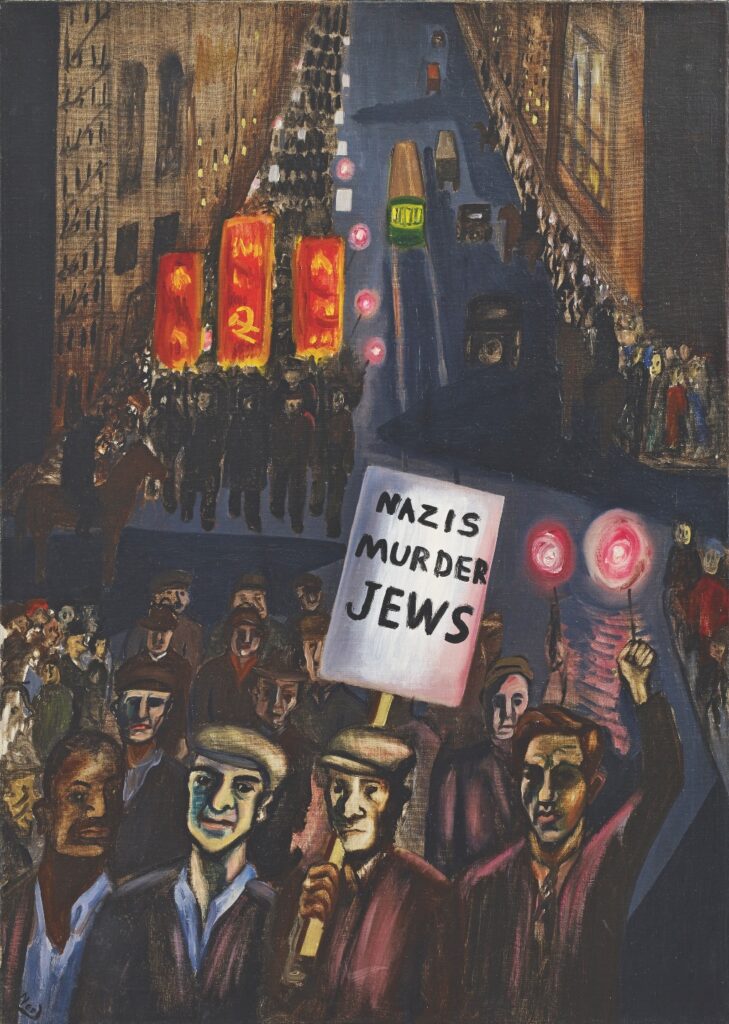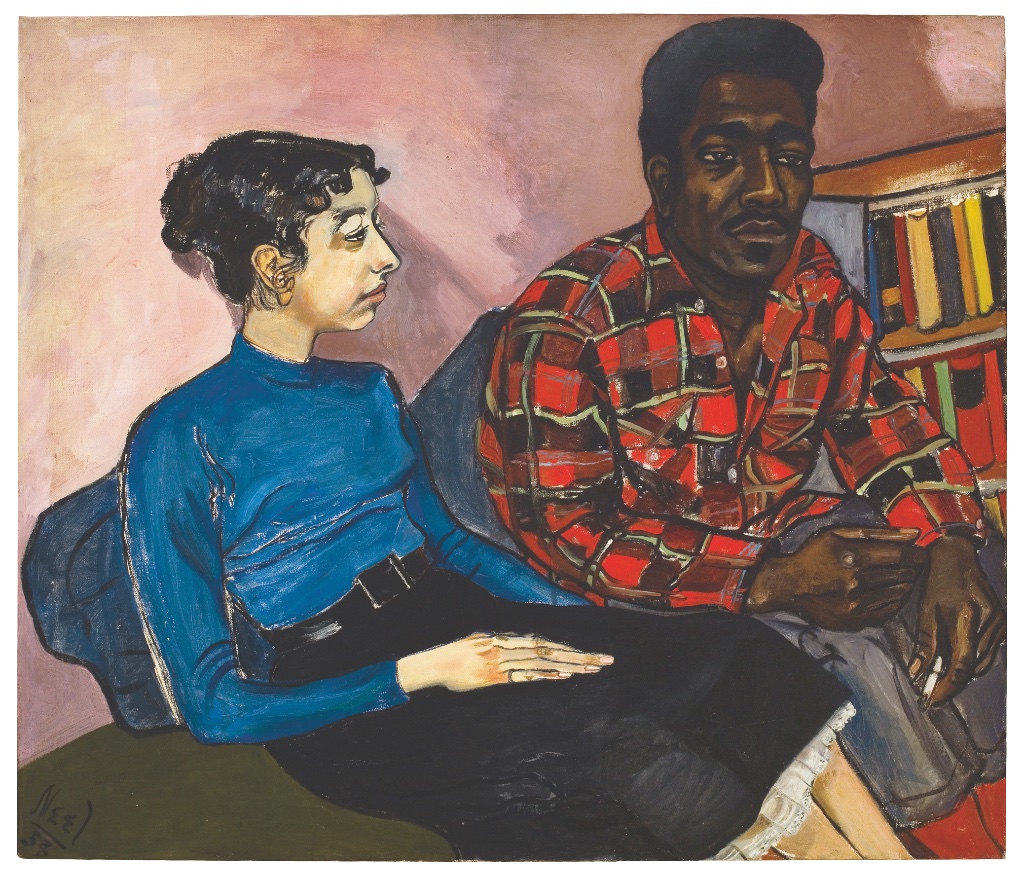I fell in love with the work of Alice Neel (1900-84) when I came across a show of her quirky portraits while gallery-hopping in London several years ago. After that, I never heard a peep about her until the Centre Pompidou announced an upcoming show of her work. It kept getting postponed year by year for various reasons, one of them, of course, being Covid. In the meantime, the Metropolitan Museum in New York put on a show of her portraits in 2021.
The Pompidou show has finally opened, and at the press opening, curator Angela Lampe was quick to note that this show, Neel’s first in France, was prepared before the Met exhibition and focuses on the social and political aspects of her work rather than the portraits.

Neel’s paintings grab you at once with their raw honesty, distorted proportions, outlined figures and powerful subjects, but once again – as is the case with the current Paris exhibitions of Edvard Munch and Frida Kahlo – the artist has a fascinating biography that informs and helps explain her work. Also like them, she completely ignored the art-world fashions of her time (although she was identified with the Ashcan School at the beginning of her career) and bravely followed her own muse.
Neel was a communist and a vehement supporter of the rights of women, workers, minorities, and the poor and marginal of every variety. “In politics and in life, I always like the losers, the underdog,” she once said. She was not afraid to broadcast her political principles in her paintings, which depicted striking workers, interracial couples, gay couples, transgender women, etc., long before wokeness was invented
Although erotic paintings are all the rage for women painters today, few female painters of Neel’s time – she lived through most of the 20th century – dared to indulge in them. She did it with a sense of humor and a total lack of interest in beautiful bodies. Her naked couples are ordinary, not particularly attractive people. She even played around with the appearance of male sexual attributes: in one painting, for example, a man has an extremely long, snaky penis, and in another, “Joe Gould” (1933), the subject is endowed with not one but two sets of sex organs, with another hanging below the stool he is sitting on.
Four years before her death in 1984, Neel painted and proudly exhibited a nude self-portrait, in which she holds a paintbrush in one hand and a rag in the other, a frank portrayal of the “flesh falling off her body,” as she put it.

One of the most powerful paintings in this show is a portrait of a half-naked Andy Warhol, looking nothing like the superstar he was, but like a fragile, wounded, aging man with sagging breasts. In the portrait, we see the scar from the gunshot wound inflicted by Valerie Solanas and the surgical corset he had to wear for the rest of his life to keep his organs in place.
Alice Neel was a hell of a painter and a hell of a woman, who never kneeled before authority. Nothing seemed to stop her, not the lack of attention to her work until late in life – when she was insultingly referred to in the press as a “grandma” who painted – nor an FBI investigation of her: the exhibition includes a 2005 work by Jenny Holzer, “Alice Neel Teal,” showing the 1953 FBI report about Neel’s communist sympathies from an unnamed “reliable informant.” Neel apparently asked the two agents who came to interview her to sit for portraits, but they refused, unfortunately for us since it would have been interesting to see what she would have made of them.
Not long before her death, Neel was finally well-enough known to be asked to appear on The Tonight Show with Johnny Carson. A clip of the show in the exhibition shows the normally standoffish host completely falling for his elderly guest, with her wonderful sense of humor and flirtatious ways. You can watch it here.

Make sure you read Neel’s comments, written on the wall at floor level, on the subject and circumstances of certain works. One of them, “Nazis Murder Jews” (1936), inspired a critic to complain that the message of the title, seen on a picket sign in the painting, was “too obvious.” Neel’s retort: “If they had noticed that sign, thousands of Jews might have been saved.”
Maybe politics do have a place in art after all, at least in the hands of a ballsy artist like Neel.
See our list of Current & Upcoming Exhibitions to find out what else is happening in the Paris art world.
Favorite

I plan to see this show the first thing when I get to Paris in late October!